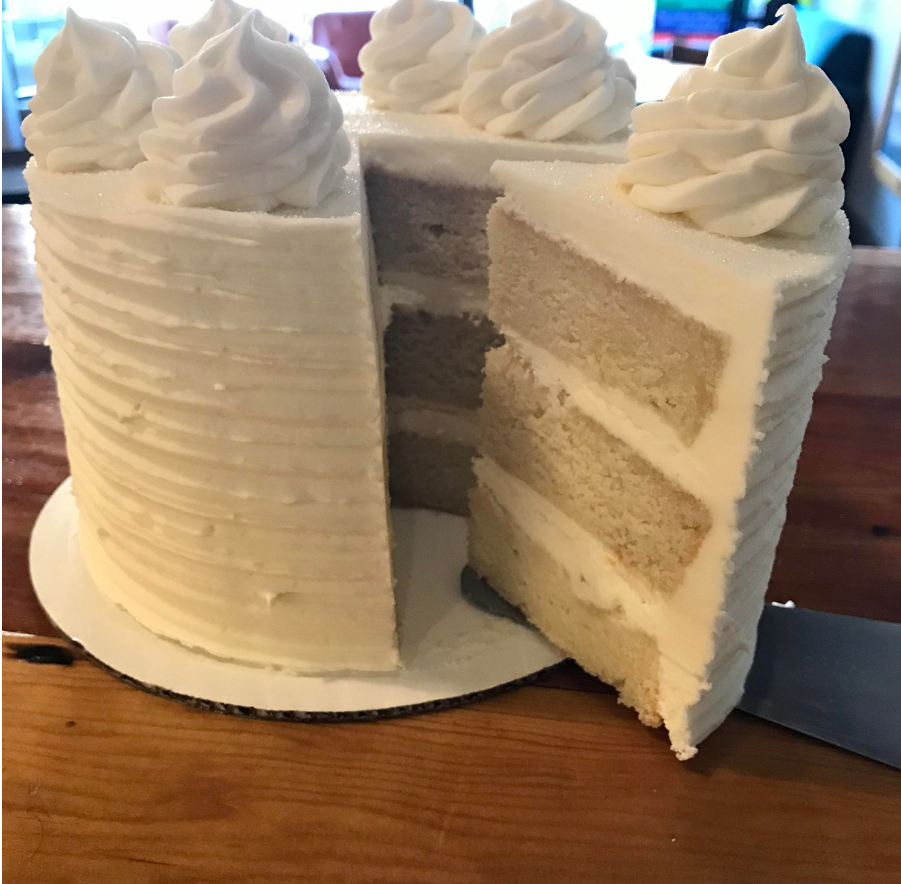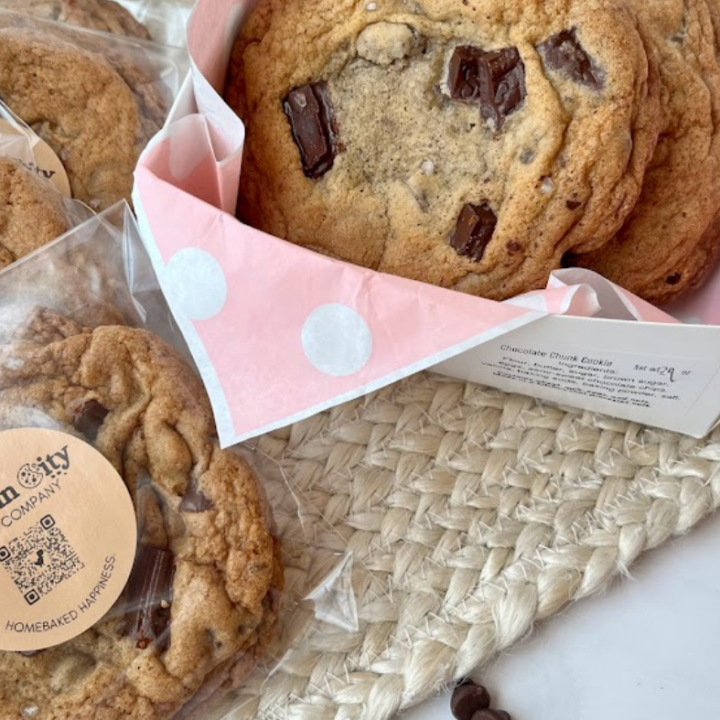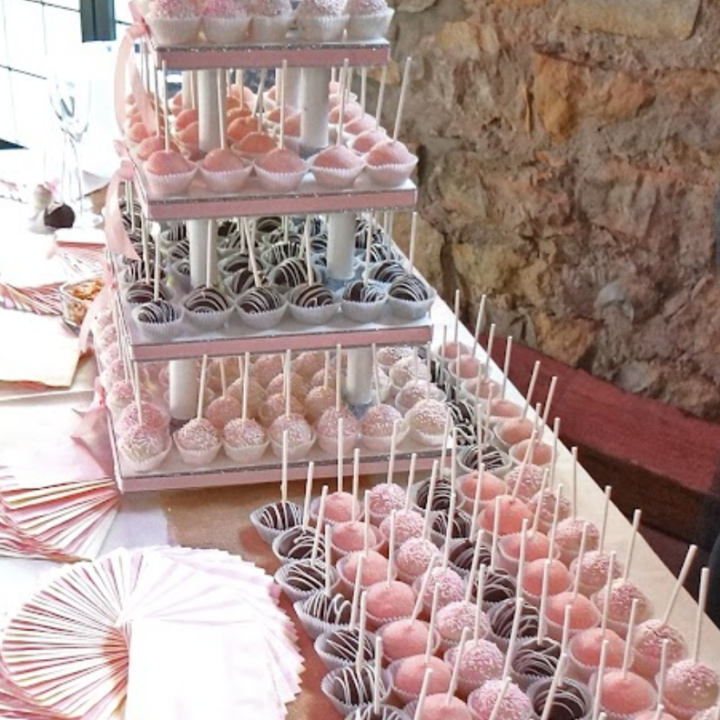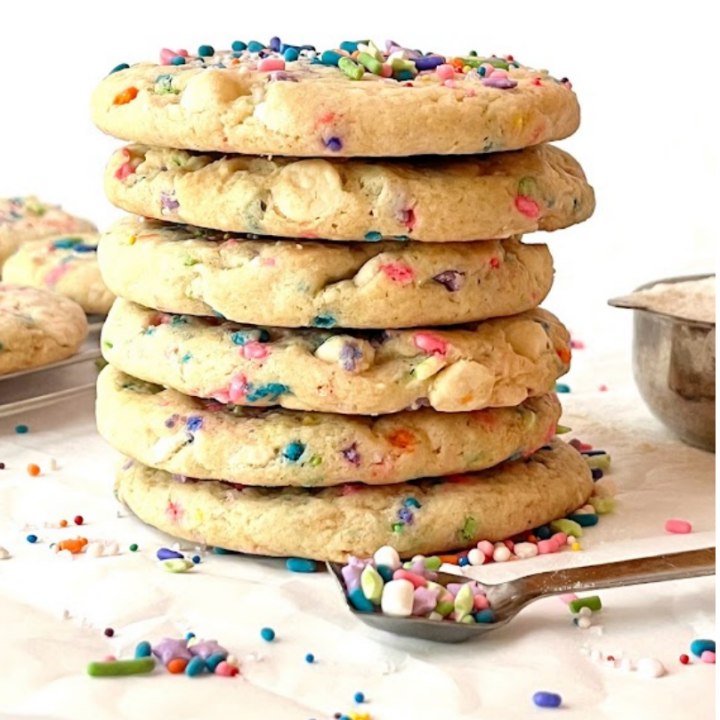Want to sell your baked goods but you don’t know how to price cakes and cupcakes for profit? Today I’m sharing my formula for pricing cakes so you can pay yourself (more than minimum wage) for your hard work!
Learning how to price for profit is an important skill for a business owner to learn if you want to make money from the sale of your baked goods.
But where do you begin if you like to make lots of different-sized cakes and cupcakes? And what about when people ask you to make them custom cake designs?
In this post, I’m sharing my formula for pricing cakes and cupcakes so that you can get your cake business started on the right foot!
If you're interested in pricing baked goods, then you might also like these posts:
Tips to help you price cake pops
How to price home-baked goods and make a profit
How to Price Cakes and Cupcakes in 5 Steps
When I first started my bakery, I needed to learn how to price cakes and cupcakes quickly. I had customers asking for price quotes on different cake flavors, different sizes, and cakes with varying degrees of difficulty. It's been a while since I closed my shop, but the basics of pricing cakes for profit are still the same. Since I've started this blog I’ve been able to help hundreds of cake decorators price their homemade cakes using this method.
Let's dive into the 5 essential steps of pricing cakes and cupcakes for profit.
Here's what you'll learn in this post:
- How to calculate your ingredient costs
- How to factor in packaging supplies to baked goods prices
- How to track labor as a cake decorator
- How to add bakery overhead costs to your sales price
- How much profit should I add to the price of my cakes
Keep reading to learn how to master each step and you’ll be pricing for profit in no time!
Step One: Costing Ingredients
If you’re whipping up cakes from scratch, the first step is to know the cost of ingredients that go into your recipe. I recommend making a list of the ingredients you use, the package size you buy, and the price you pay.
The next thing you need to do is calculate the ingredient price by weight. To do this, I recommend keeping everything in the same unit. (choose either ounces or grams)
Here’s an example:
-
You buy flour at the grocery store in a 5 lb bag for $2.98
-
5 lbs is the same thing as 80 ounces
-
80 ounces cost $2.98
Then you can break down the flour cost per ounce, divide $2.98 by 80, and you’ll get $0.037/oz
💡PRO TIP: List all your ingredient costs by weight.
List your ingredients by weight
So how can you put a price on 2 cups of flour?
To do this you’ll need to know the weight of 2 cups of flour. You can find the weight of flour by measuring 2 cups of flour and placing it on a food scale, or by using a food database like this King Arthur Ingredient Weight Chart.
Now that you know the price per ounce of flour, you can multiply $0.037 by 8 ½ and you’ll find that the flour in your recipe costs $0.31 total.
If you're feeling a little overwhelmed...hang in there. This step is the most time-consuming one. If you can get through this one, you've already done the hardest part.
I like to make things easy on myself so I put the cost of ingredients in a spreadsheet to keep them organized. It does all the calculations for me, which makes this step much easier!
Learn more about my spreadsheet here. The spreadsheets pictured are part of my Perfect Pricing Calculator. The Perfect Pricing Calculator is an easy-to-use spreadsheet specifically designed to help home-based bakers understand their costs and make a profit.
Bakers love the Perfect Pricing Calculator because it's yours to own on an Excel spreadsheet, giving you complete control. Use it on any device that runs Excel. Once it's installed, you can access it from multiple devices, or share it with your team.
✓ Perfect Pricing Calculator Download Unlike other pricing tools on the market, after purchasing this tool, you own the Excel workbook. No recipes to track down or recurring monthly costs to worry about.
✓ Overhead Calculator The Perfect Pricing Calculator helps you keep a close eye on your monthly expenses and make necessary adjustments to your selling prices.
✓ Master Inventory List - When your ingredient costs go up, The Perfect Pricing calculator updates your costs across all recipes in the workbook.
Step Two: Factoring in Packaging Supplies
Next, you'll want to track all the packaging and materials that you use to make and sell your cakes. These are called variable costs because the amount you use varies depending on how much you sell.
Here are some typical variable costs associated with cakes and cupcakes:
- cupcake liners
- cake boards (cake pads)
- cake box
- cupcake boxes
- disposable pastry bags
- parchment paper
- ingredient labels
- logo stickers
You can include the cost of materials in your recipe to keep track of your variable expenses on each cake recipe you make. Here's an example of a cupcake recipe that has the packaging and materials included.
Step Three: Include Your Labor Cost in the Price of Your Cakes
Calculating the right price for your cake creations involves more than just tallying up the ingredient cost and supply costs. You'll need to track how much time it takes you to mix, bake, and decorate your cakes so that you can come up with a cake price that pays you fairly for your hard work.
To do this, decide on an hourly rate for your work. If you're having a hard time putting a price on your cake-making talents, look into what cake decorators make in your area. Decide on an hourly rate that is appropriate for your skill level.
Remember, you're setting your hourly rate as a cake decorator, not the CEO of your cake business. Labor costs are calculated by multiplying your hourly wage by the amount of time that you spend on the cake. If it takes you a lot of time to decorate, then you either need to charge a lot for your cake or learn to work faster.
Don't be surprised if you discover that your labor costs more than your ingredients do. It's a widely known fact that labor is the biggest expense in the bakery industry!
Keep reading to learn about profit markup. Your profits will cover other tasks like shopping for ingredients, selling at the farmers market, and promoting your items on social media.
Step Four: Include overhead costs
Indirect costs (aka fixed costs) are costs associated with running your business that don’t change each month. Each baker has different indirect costs, which is one reason why it's not a good idea to base your pricing on your competition. They may have different costs than you and need to charge more or less to cover those.
Here are some examples of indirect costs:
- kitchen rental space
- farmers’ market fees
- website maintenance
- business insurance
- membership fees
The easiest way to calculate your fixed costs is to add up your monthly expenses and divide them by your monthly sales. This will give you a cost per dollar value. To factor this into your final price, add this amount to your markup when you are calculating your sales price.
Step Five: Profit
Up till now, we have been talking about the different costs associated with making homemade cupcakes and cakes. The term Cost of Goods Sold (COGS) is the money a business spends directly to make the things it sells. This includes the cost of materials (like ingredients for baking), labor (payment for the time spent making the items), and other expenses directly related to production.
Knowing the COGS helps you figure out how much you would need to sell your cakes and cupcakes for to break even. Of course, you probably didn't come here to learn how to break even so the next step is to mark your product up for profit.
What is a healthy profit margin for cake bakers?
Common profit margins in the bakery industry range from 20% to 50%, depending on various factors.
Here's what you need to consider to decide on your profit margin:
Consider your overhead costs- The fixed costs associated with running your bakery are not part of your COGS, but should be covered in your markup. Bakers with lower costs will need less markup, and bakers with higher monthly expenses will need to have a higher markup.
Market research- Your geographic area is a big consideration in how much you can mark up your products. If you live in an area that pays a higher price for quality baked goods, then you may be able to have a higher markup. On the other hand, if your customers are not going to pay top dollar, you'll want to adjust your markup down to fit the market value.
Skill level- Are you looking for customers or do you find yourself consistently booked? If you are the type of business that is in high demand and you don't struggle to get orders, you can consider increasing your markup!
What is the formula for marking up baked goods for profit?
If you know your Cost of Goods Sold (COGS) and your desired markup percentage, you can calculate the selling price using the following formula:
Selling price= COGS+(COGS x Mark Up Percentage)
Let's break it down with an example:
- Cost of Goods Sold (COGS): Let's say your COGS for a cake is $20.
- Markup Percentage: If your desired markup is 30%, express it as a decimal (30% as a decimal is 0.30). Markup Percentage=0.30
Now, use the formula:
Your Selling Price = $20 + ($20 times 0.30)
Price = $20 + $6
Selling Price = $26
Additional Tips for How to Price Cakes and Cupcakes
Batch sizes
During my time as a cake shop owner, I often used one recipe for various size cakes and cupcakes. Whether it was sheet cakes, wedding cakes, or cupcakes, my go-to vanilla cake batter proved to be incredibly adaptable. A game-changer for me was pricing the batter based on its weight. This approach simplifies calculating a base price and is an easy way to determine how much batter you need for any size item you decide to bake.
Curious about how much batter you need for different cake sizes? Click here for more details.
Nested recipes
Cake and cupcake decorating invariably involve several recipes. Chocolate cake recipe, vanilla cake recipe, red velvet cupcakes, and carrot cake all get frosted with some sort of frosting. When you are calculating the price of ingredients be sure to include not just the cake recipe, but the frosting recipe as well as any additional decorations (like sprinkles, edible glitter, fondant, and gum paste flowers)
If you apply the concept of pricing by weight to your frosting, it becomes much easier to set your prices for different sizes.
Here's an example of how I price my cupcakes using cake and frosting by weight:
How to price cupcakes with different flavors
Making a price list for various flavors follows a simple process. Begin by figuring out the cost of each flavor on your menu. Then, organize them into groups. I prefer grouping similarly priced cupcakes under a category named "signature flavors." For those with higher ingredient costs, I place them in a category with a slightly higher price, known as "specialty flavors."
Tips for pricing custom design cakes
When pricing custom-designed cakes, I like to use what I call a cost-plus approach.
First up, figure out the starting price for your simpler designs. Consider your costs, the time you put in, and the basic markup you need. Now, onto step two. Add a little extra for those fancy, custom designs. Think about the extra time and effort they take. This way, you're not just covering the materials but also getting paid for your creativity. Break it down like this, and you're all set to offer personalized cakes and cupcakes without selling yourself short.
Let's break down an example of a custom design that requires 1 hour of additional decorating:
Starting Cake (Base Cake):
Base Price: $80 (covering the cost of the base cake, labor, supplies, and base-level markup)
Total Cost: $80
Custom Cake (Intricate Design with 1 Hour Additional Decorating):
Additional Decorating Time: 1 hour
Labor Cost:$20/hour 1 hour = $20
Additional Cost for Customization: $20 (additional labor cost)
Total Cost for Custom Cake: $80 (base) + $20 (additional customization) = $100
In this example, the starting cake with a base cost of $80 includes the base cake, labor, supplies, and a base-level markup. For a custom cake with an intricate design requiring 1 hour of additional decorating, the additional labor cost is factored in, resulting in a total cost of $100. Because of this approach, you are fairly compensated for both the materials used and the creative skill invested, considering the $20/hour labor cost for customization.
A few final thoughts about how to price cakes and cupcakes
Have you calculated your prices and found you need to charge more than your fellow bakers? Because of your unique costs, this can happen. If it does, be sure to point out what sets you apart. Do you use higher-quality ingredients? Is your labor higher because of your skill level? Incorporate this in your marketing strategy to help your customers understand your prices. Remember- you may lose a few customers who disagree with your pricing, but that opens you up to accommodate customers who are willing to pay your higher prices!
Be sure to check out my other pricing blog posts
Pricing homemade cookies
How to price home-baked goods and make a profit
If you'd like to see me demonstrate the pricing steps outlined in this blog post, sign up below and I'll send you a link to my pricing masterclass.
In the world of cake decorating, understanding the true value of your time is the key to making good money! I hope this blog post helped you to navigate the intricacies of pricing your creations. Pricing is the first step towards ensuring your time is worth every penny and transforming your love for baking into a successful business venture. Don't just sell cakes—sell the expertise and effort you invest in each masterpiece!













Serenity says
How much would be the final cost of one cupcake? That would be helpful since you broke that down in the cookie price. Thank you!
Better Baker says
To figure out the final cost of one cupcake, you'll want to add up the cost of all your ingredients, any packaging, and a portion of your overhead costs (like utilities and labor). If you're interested, I share exactly how I calculate these costs in this video: https://betterbakerclub.ck.page/69b5c33223. This method can help you determine the best price for your cupcakes!